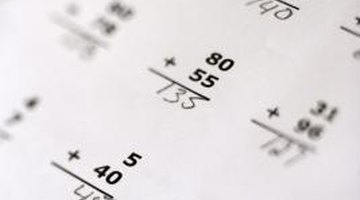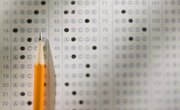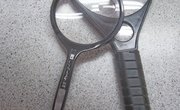Teachers give summative assessments at the end of a lesson or unit to determine how well students have achieved mastery over the material. Summative assessments take into consideration the teacher’s goals, the students’ performance and the type of different learning styles inherent in the classroom. Developing a summative assessment requires teachers to pay attention to each of these assessment areas so they can craft a high-quality test that reflects student achievements.
Objectives
Summative assessments start when a teacher examines the objectives of a particular lesson or unit, according to the creators of the Understanding by Design method of instruction Jay McTighe and Grant Wiggins. These objectives are actionable statements such as “Students will be able to analyze a passage of literature” or “Students will conjugate Spanish to-be verbs.” Objectives lead instruction in that they provide teachers with a blueprint or goal to guide their in-class activities. Consequently, the primary goal of a summative assessment is to gauge how well students have developed mastery or comprehension of the teacher’s objectives.
Outcomes
McTighe and Wiggins point out that sometimes the actual outcomes of a teacher’s instruction don’t align perfectly with the teacher’s objectives. Occasionally, the teacher is able to cover more material than she planned, but often in these situations, the teacher was unable to cover all the materials she hoped to. In this case, when creating a summative assessment, the teacher must take into account the different learning objectives she successfully covered. She must limit her summative assessment to the outcomes of her instruction so that she is not unfairly testing students on material they have yet to cover.
Variety of Modes
Once the teacher has identified the objectives and outcomes on which she will assess students, the Iowa Department of Education recommends she develop a variety of modes by which she will test students. These modes include areas like practice problems, multiple choice questions, true/false questions and essay questions. The modes of her summative assessment should match the material and exercises she covered during her instruction. For example, if she had students writing practice paragraphs, a portion of her assessment should include a lengthier essay-style section.
Differentiation
Once teachers have finished the standard summative assessment they will use to gauge students’ mastery, they must also identify key ways they can differentiate the material and delivery of that assessment to account for remedial and advanced students. For example, following the ideas of Rita Iafrate et al., a teacher might drop one of the choices from a multiple choice exam to assist a remedial student to successfully complete the assessment. Similarly, a teacher might expand upon a short answer section by requiring advanced students synthesize responses to multiple prompts to form a larger, more cohesive essay.
Related Articles
References
Writer Bio
Samuel Hamilton has been writing since 2002. His work has appeared in “The Penn,” “The Antithesis,” “New Growth Arts Review" and “Deek” magazine. Hamilton holds a Master of Arts in English education from the University of Pittsburgh, and a Master of Arts in composition from the University of Florida.











